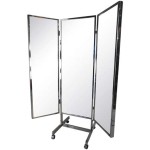Can You Screen Mirror From iPhone to Mac? A Comprehensive Guide
Screen mirroring, the process of duplicating the display of one device on another, has become an increasingly popular feature for various purposes, ranging from presentations and entertainment to collaborative work and troubleshooting. The ability to project a mobile phone screen onto a larger display, like a computer monitor, offers enhanced visibility and interaction. This article will delve into the capabilities of screen mirroring from iPhones to Macs, exploring the methods available, the associated advantages, potential limitations, and troubleshooting tips to ensure a seamless experience.
Apple's ecosystem emphasizes seamless integration between its devices. Features like AirDrop, Handoff, and iCloud demonstrate the company's commitment to creating a cohesive user experience. Screen mirroring plays a crucial role in this ecosystem, allowing users to leverage the power of their Macs to interact with their iPhones in new and efficient ways. Understanding the available techniques and their nuances is essential for maximizing productivity and enjoyment within the Apple environment.
While the concept of screen mirroring might seem straightforward, the actual implementation can involve various technologies and configurations. Factors such as network connectivity, device compatibility, and software versions can influence the success and quality of the mirrored display. Therefore, a thorough understanding of the underlying principles and potential challenges is crucial for a successful screen mirroring experience.
AirPlay: Apple's Native Solution
AirPlay is Apple's proprietary wireless streaming protocol that allows users to mirror the screen of their iPhone to a compatible device, including Macs. Since the introduction of macOS Monterey, Apple natively integrates AirPlay Receiver functionality directly into the operating system. This eliminates the need for third-party applications or complicated setups in most cases.
To use AirPlay for screen mirroring, both the iPhone and the Mac must be connected to the same Wi-Fi network. The iPhone user simply needs to access the Control Center by swiping down from the top-right corner of the screen (or swiping up from the bottom on older iPhone models). Within the Control Center, tap the "Screen Mirroring" button. A list of available AirPlay receivers will appear, including the Mac (identified by its name). Selecting the Mac from the list initiates the screen mirroring process.
Once connected, the iPhone's display will be mirrored on the Mac's screen. The user can then interact with the iPhone through the Mac's display, view photos, watch videos, and even play games. The quality of the mirrored image and the responsiveness of the connection will depend on the strength and stability of the Wi-Fi network connection.
AirPlay offers several advantages, including ease of use, native integration with Apple devices, and support for audio streaming alongside video. However, it relies heavily on a stable and fast Wi-Fi network. Experiencing lag or disconnections may occur if the network is congested or the signal strength is weak. Furthermore, older Mac models may not be fully compatible with the latest AirPlay features.
It is important to ensure both the iPhone and the Mac are running the latest compatible versions of iOS and macOS, respectively. Outdated software can lead to compatibility issues and prevent AirPlay from functioning correctly. Regularly updating the operating systems is recommended for optimal performance and security.
Using Third-Party Applications for Screen Mirroring
While AirPlay is Apple's native solution, various third-party applications offer alternative methods for screen mirroring from iPhones to Macs. These applications often provide additional features and flexibility, such as support for different connection protocols, screen recording capabilities, and remote control functionalities.
Several screen mirroring applications are available on the App Store and Mac App Store. Some popular options include Reflector, AirServer, and LetsView. These applications typically require installation on both the iPhone and the Mac. Once installed, the applications will guide the user through the setup process, which may involve granting permissions and configuring network settings.
Third-party applications often utilize protocols other than AirPlay, such as Google Cast or proprietary streaming technologies. This can be advantageous in situations where AirPlay is not performing optimally or when mirroring to devices that do not support AirPlay. Some applications also offer advanced features, such as the ability to select specific regions of the iPhone screen to mirror or to annotate the mirrored display.
However, it is important to exercise caution when using third-party applications, particularly those that require extensive permissions or access to sensitive data. Thoroughly research the application's reputation and read user reviews before installing it. Also, ensure that the application is obtained from a reputable source, such as the official App Store, to minimize the risk of malware or security vulnerabilities. Consider the privacy policy and data handling practices of the application provider before granting any permissions.
The performance of third-party applications can vary depending on the specific application, the network conditions, and the hardware capabilities of the devices involved. It is recommended to test different applications to determine which one provides the best performance and feature set for individual needs. Compatibility with different iOS and macOS versions should also be verified before committing to a particular application.
Troubleshooting Common Screen Mirroring Issues
Despite the advancements in screen mirroring technology, various issues can arise, preventing a successful connection or affecting the quality of the mirrored display. Understanding these common issues and knowing how to troubleshoot them is essential for a smooth and frustration-free screen mirroring experience.
One of the most common issues is the inability to discover the Mac as an AirPlay receiver. This can be caused by several factors, including network connectivity problems, firewall restrictions, and incorrect AirPlay settings. First, ensure that both the iPhone and the Mac are connected to the same Wi-Fi network and that the Wi-Fi connection is stable. Verify that the Mac's firewall is not blocking AirPlay connections. This can be done by checking the firewall settings in System Preferences and ensuring that incoming connections for AirPlay are allowed.
Another frequent problem is lag or stuttering in the mirrored display. This is often caused by a weak or congested Wi-Fi network. Try moving the iPhone and the Mac closer to the Wi-Fi router to improve the signal strength. Closing unnecessary applications on both devices can also help free up resources and improve performance. Consider upgrading to a faster Wi-Fi router or switching to a less congested Wi-Fi channel if the problem persists. If using a third-party screen mirroring application, experiment with different settings, such as reducing the resolution or frame rate of the mirrored display, to see if that improves performance.
Audio problems, such as no sound or distorted sound, can also occur during screen mirroring. Ensure that the audio output is correctly configured on both the iPhone and the Mac. Check the volume levels and make sure that the audio is not muted. In the iPhone's Control Center, verify that the audio output is set to the Mac's speakers. In the Mac's System Preferences, ensure that the correct audio input and output devices are selected. If using a third-party application, consult the application's documentation for specific instructions on configuring audio settings.
If screen mirroring consistently fails or encounters persistent issues, consider restarting both the iPhone and the Mac. This can often resolve temporary software glitches or network configuration problems. Resetting the network settings on both devices can also be helpful. On the iPhone, this can be done by going to Settings > General > Transfer or Reset iPhone > Reset > Reset Network Settings. On the Mac, this can be done by removing the Wi-Fi network from the list of preferred networks and then rejoining it.
Finally, always keep both the iPhone and the Mac's operating systems up to date. Software updates often include bug fixes and performance improvements that can address screen mirroring issues. Check for updates regularly and install them promptly to ensure optimal compatibility and functionality.
Screen mirroring from an iPhone to a Mac offers a blend of convenience and extended functionality. The choice between AirPlay and third-party applications rests on individual needs and the specific use case. By understanding the strengths and limitations of each method, and by implementing the troubleshooting steps outlined, users can achieve a reliable and productive screen mirroring experience.

How To Mirror Iphone Display Macbook Ios 12 Macos Mojave

2024 How To Mirror Iphone Display Mac Ios 14 And Big Sur

2024 Updated How To Mirror Iphone Mac With 5 Methods

How To Mirror Iphone Mac Without Wi Fi

2024 Updated How To Mirror Iphone Mac With 5 Methods

How To Use Apple Airplay Mirror Your Iphone Mac Screen On Tv Roku And More Cnet

How To Mirror Iphone Mac 8 Methods

5 Easy Steps To Mirror Iphone Mac Istreamer

How To Mirror Iphone Mac 2024

How To Mirror Mac Iphone








